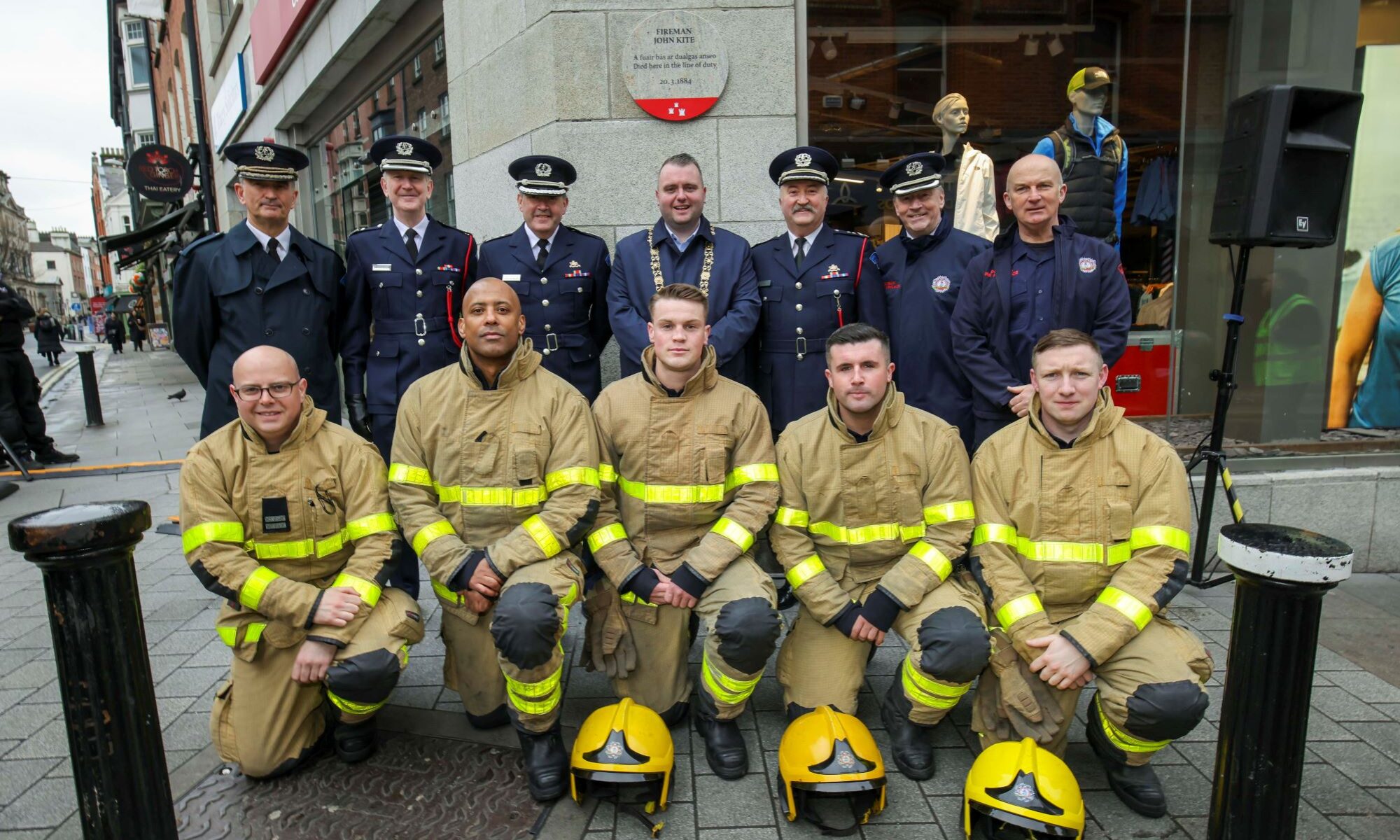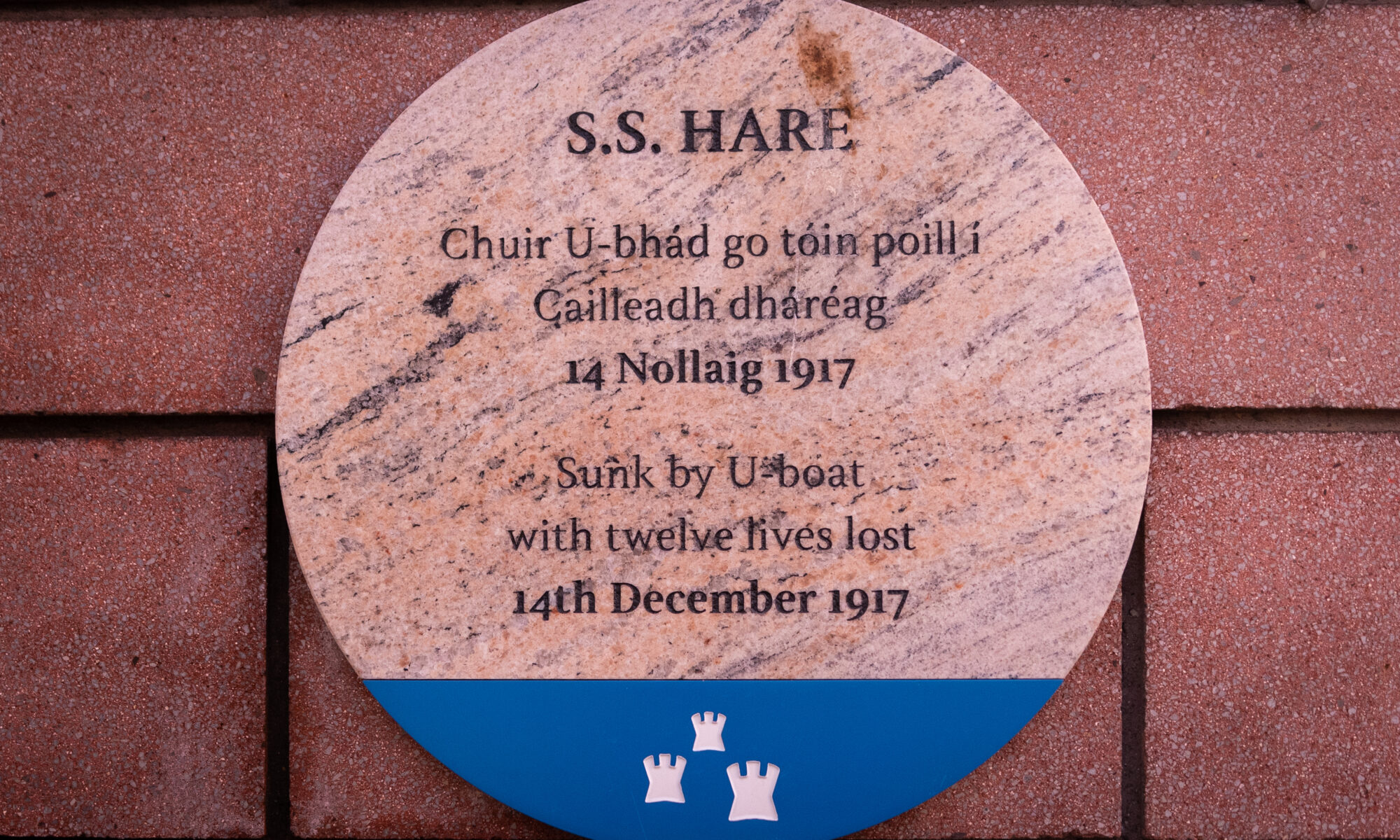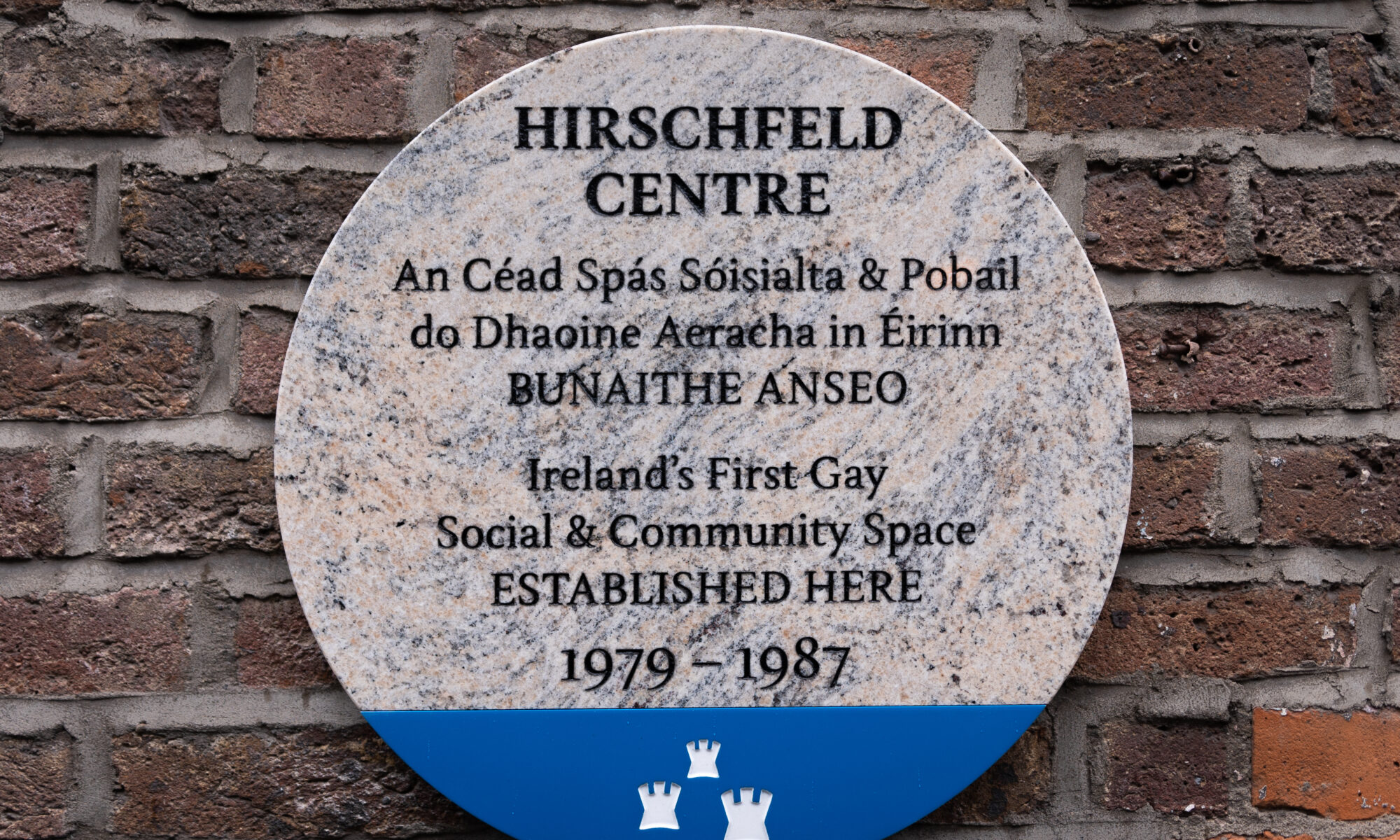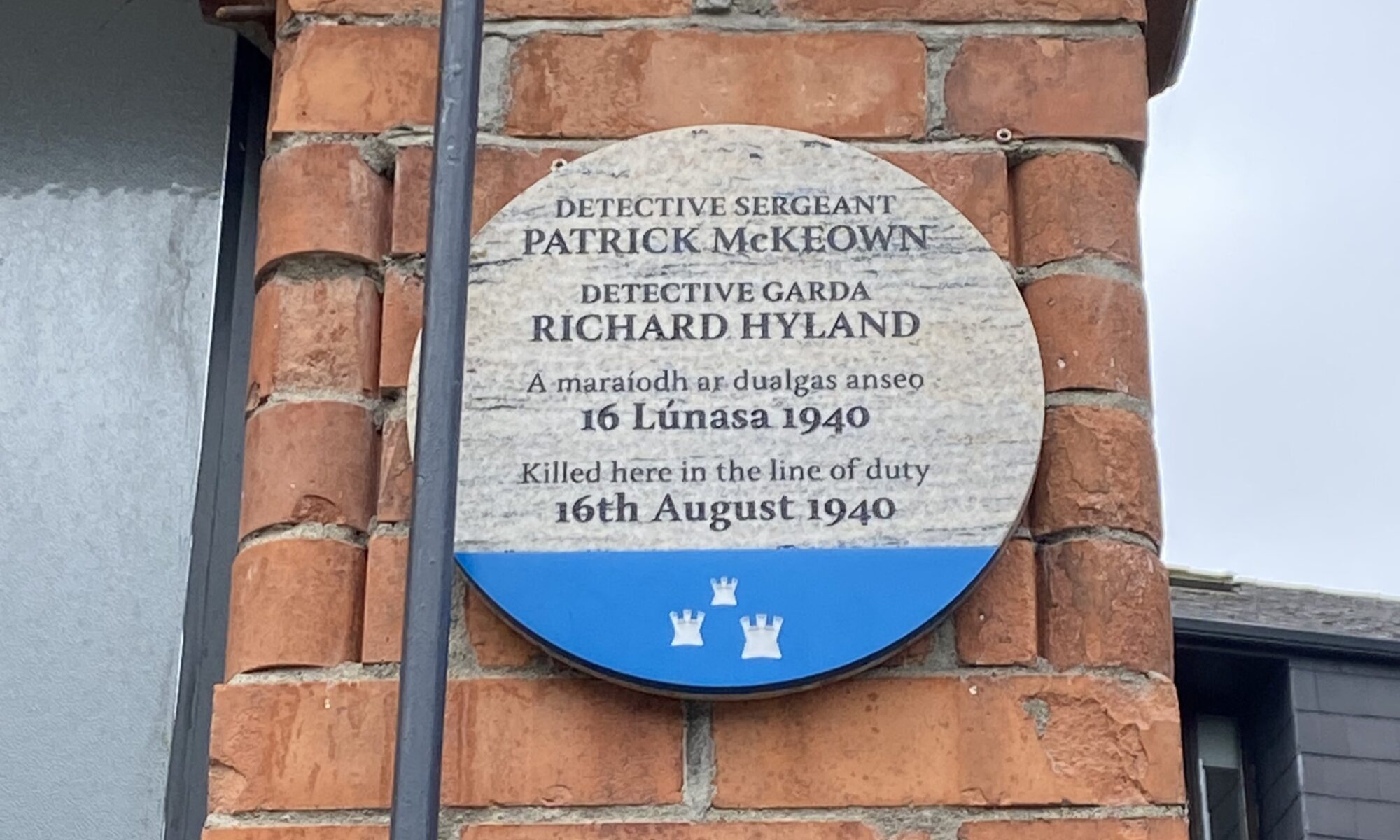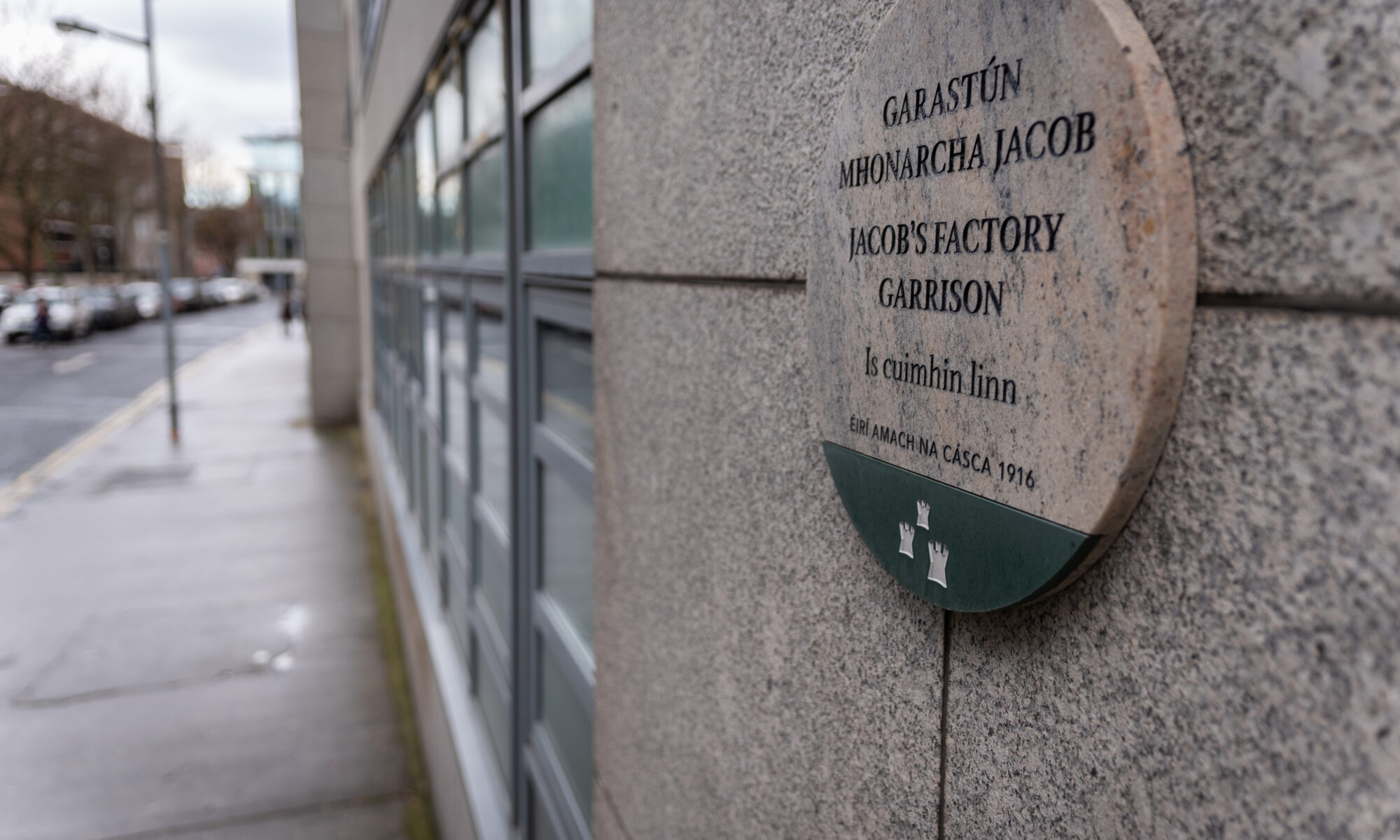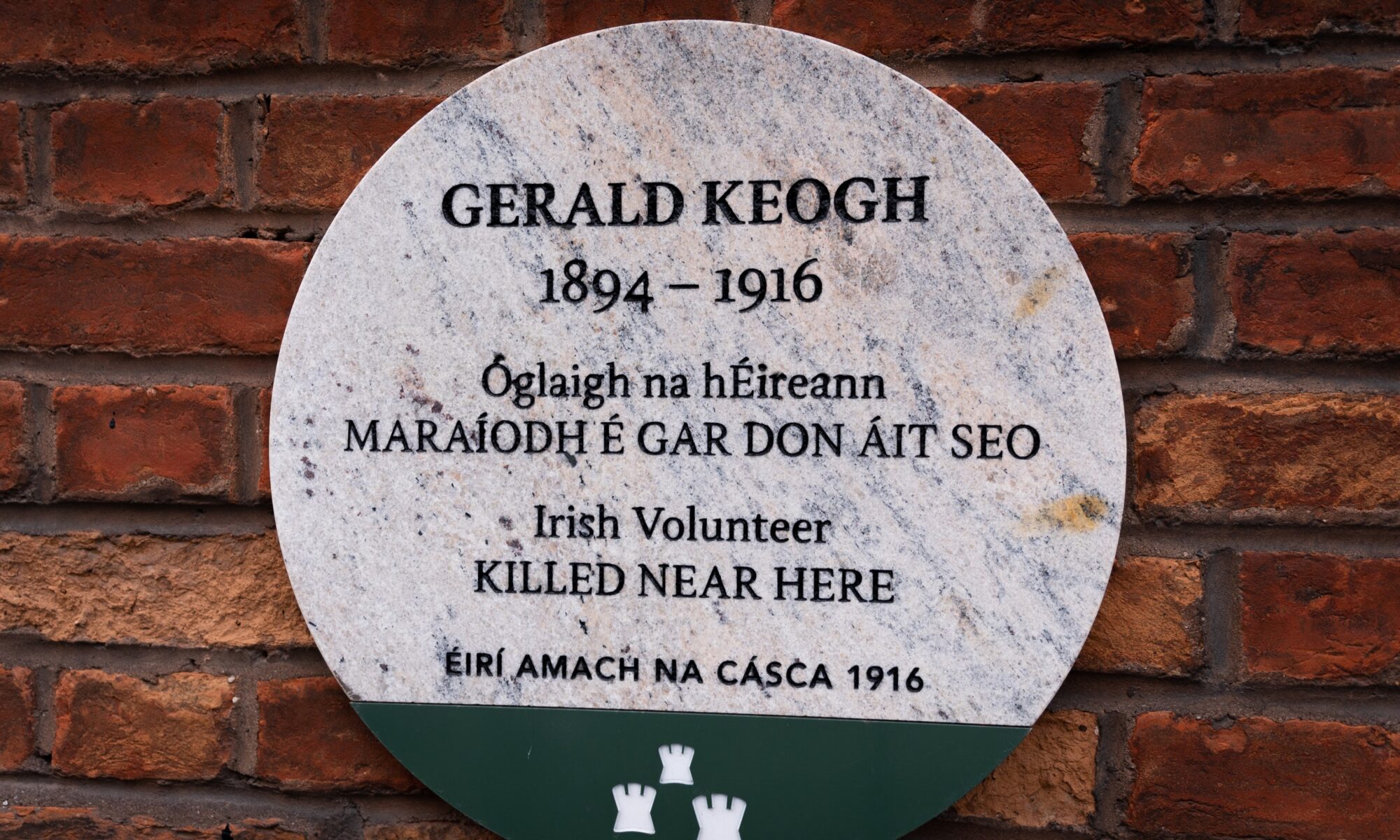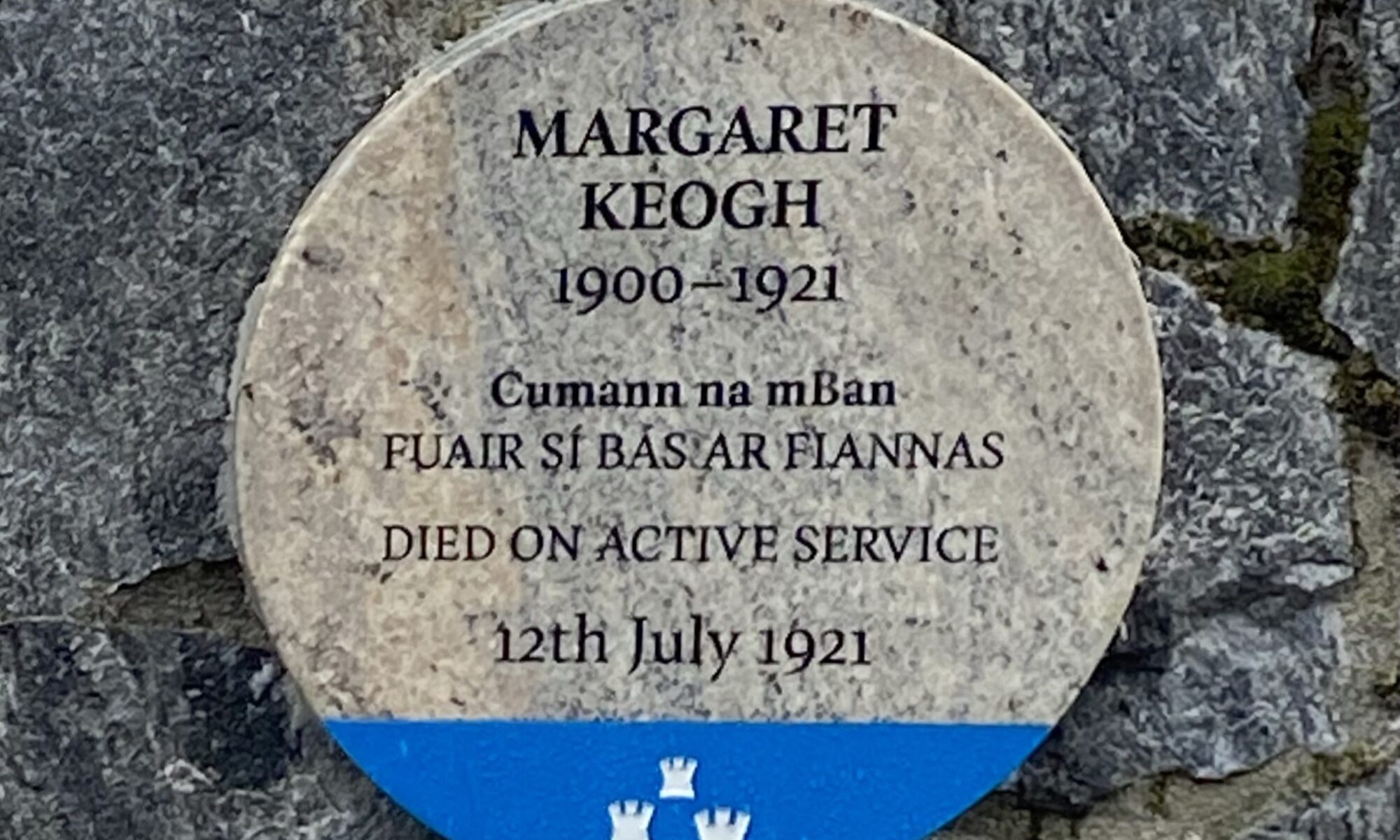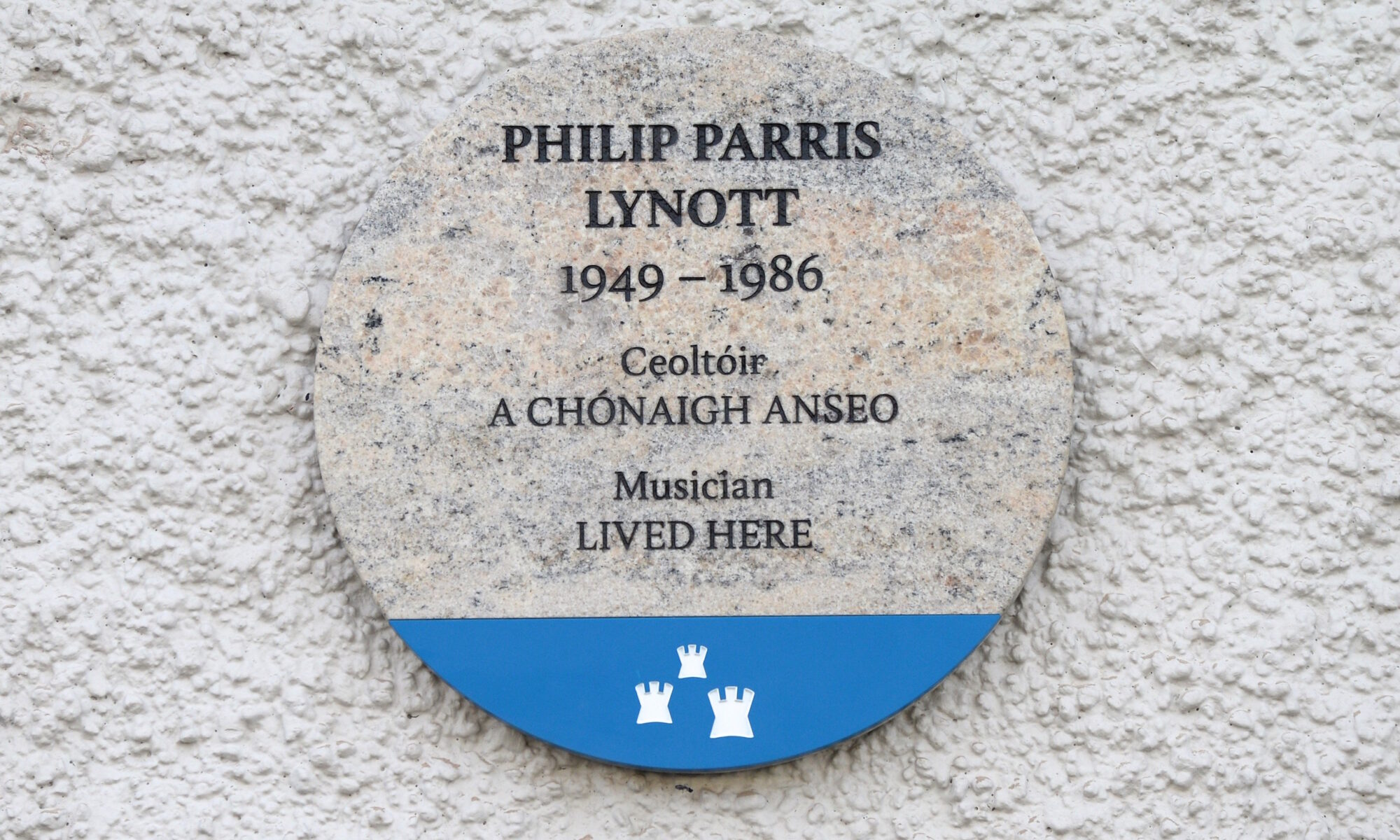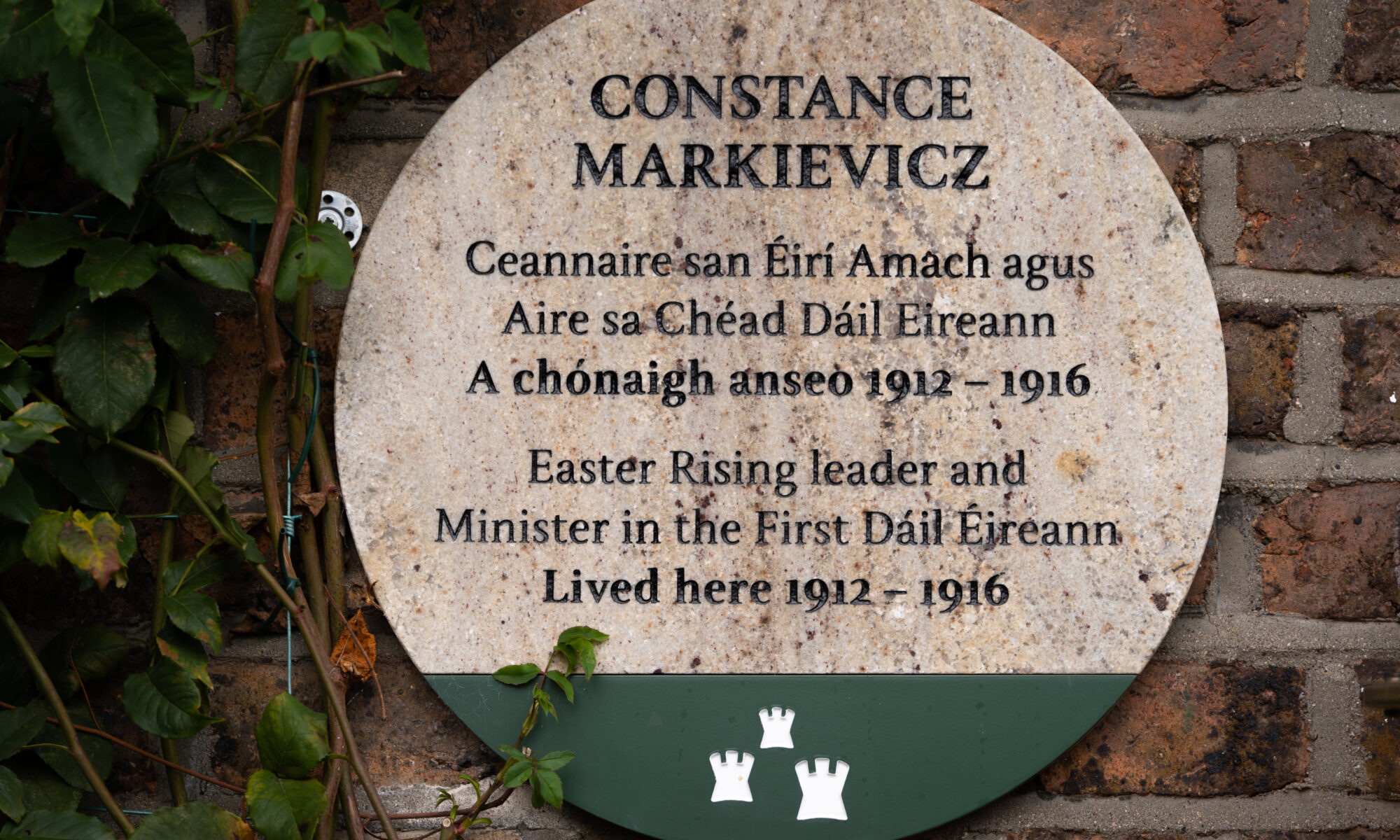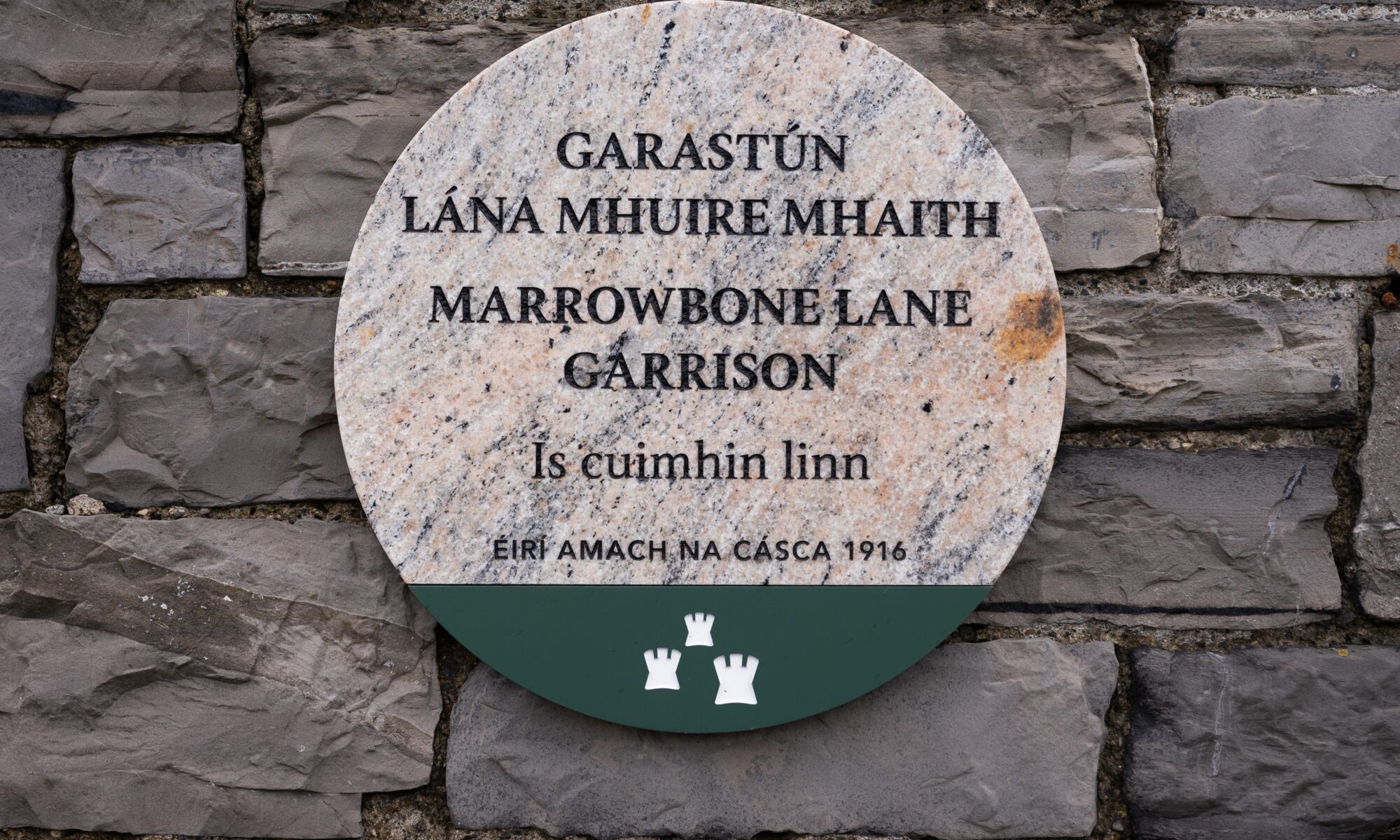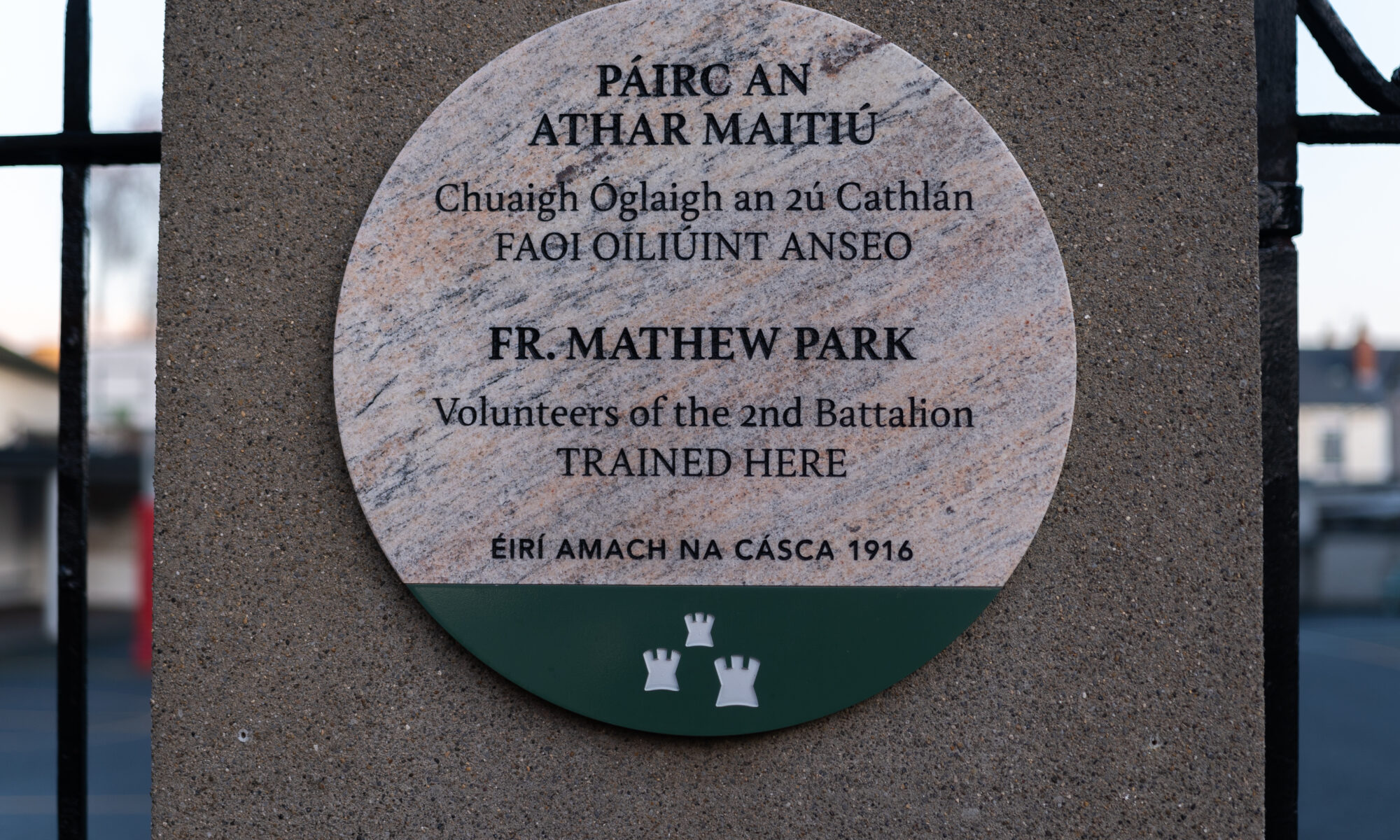On Monday 16th August, 2021, a Dublin City Council honouring Detective Garda Richard Hyland and Detective Sergeant Patrick McKeown was unveiled at 97A Rathgar Road, Dublin 6.
The plaque was unveiled by Ms Marie Hyland (daughter of Garda Hyland); Councillor Mary Freehill (representing the Lord Mayor), and Garda Commissioner Drew Harris,
Detective Sergeant Patrick McKeown, from Armagh, and Mayo-born Detective Garda Richard Hyland, were both shot during a raid at 97A Rathgar Road, on 16th August 1940.
Shortly before 8 a.m. on 16th August, 1940 a group of five detectives, under the command of Detective Sergeant Patrick McKeown, carried out a search in Rathgar Road, Dublin, under the provisions of the Offences against the State Act, 1939. After gaining entry to the building, the Gardaí were surprised by a burst of gunfire from behind a partition wall.
Detective Garda Hyland managed to discharge one shot after being wounded which warned off his surviving colleagues from entering through the front of the shop. Detective Sergeant McKeown died from his wounds the following day. Another Garda, Detective Garda Brady, was seriously wounded.
Richard Hyland was born on 26th October, 1903, in Manulla, Co. Mayo. He grew up in Maynooth, Co. Kildare, and later lived in Dublin. He joined An Garda Síochána on 9th September, 1933. Prior to joining An Garda Siochana he served as Quartermaster of ‘E’ Coy, 3rd Battalion, Dublin Brigade during the War of Independence. He served on the Republican side during the Civil War and was a member of the bodyguard of Éamon de Valera when he escaped from the old Hamman Hotel in Dublin during that period. Detective Garda Hyland was a married man with two children.
The decision to erect the plaque was made by the Dublin City Council Commemorations & Naming Committee.
